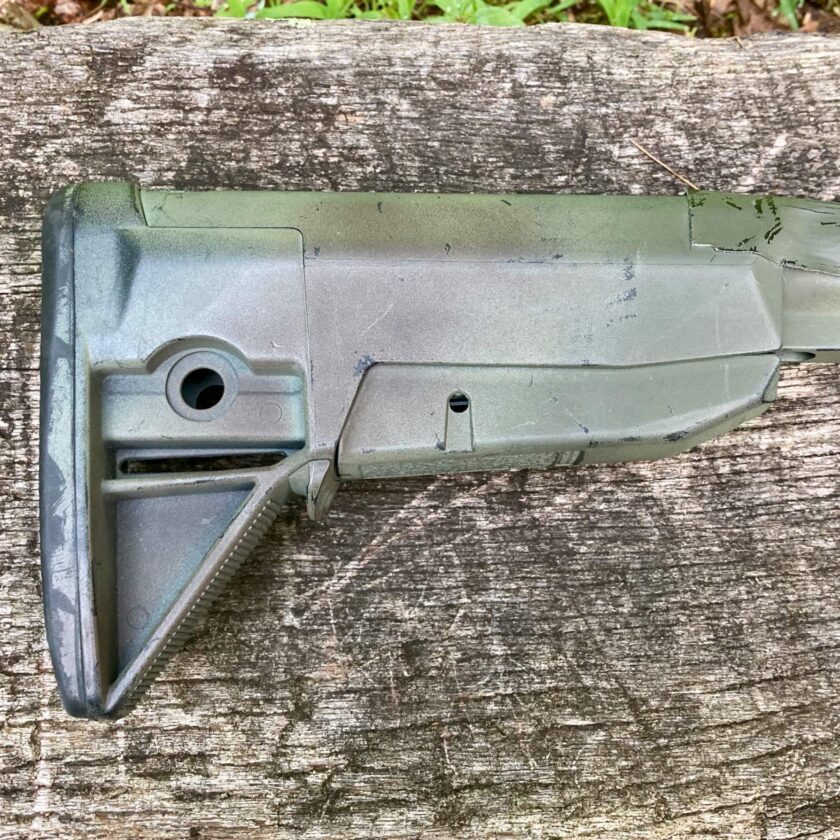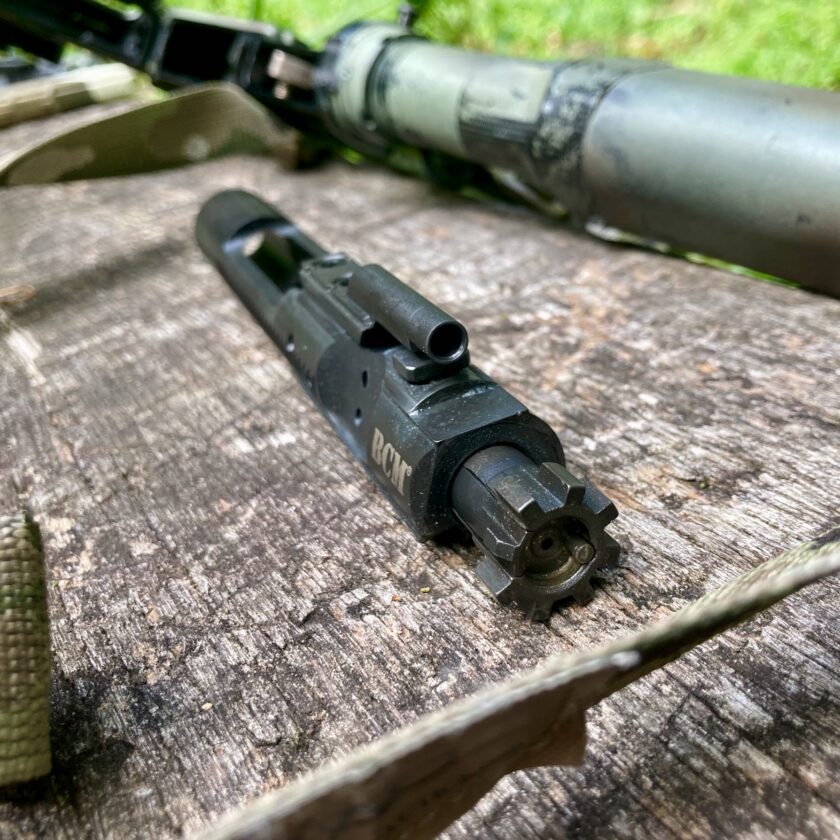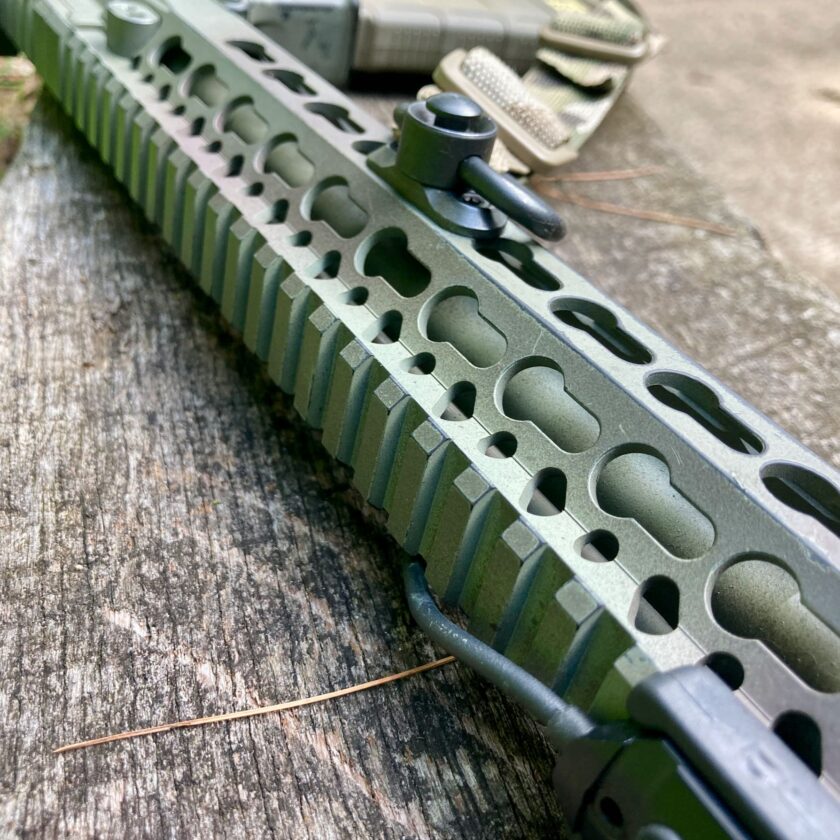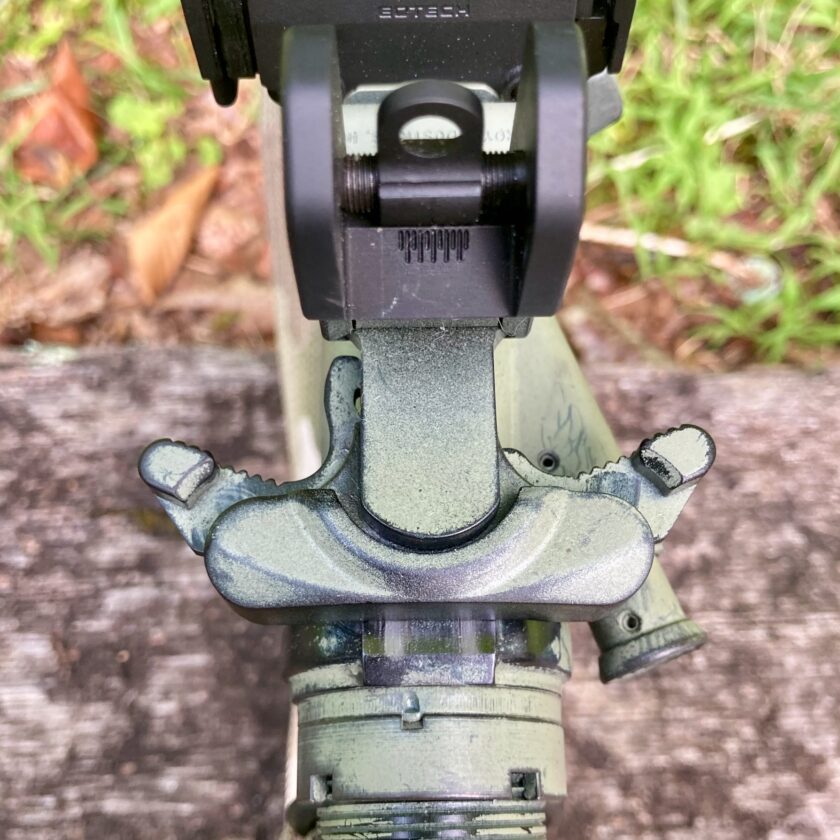Many of you are probably wondering why I chose to write about accessories (Part I, Part II) for the rifle before writing about the AR-15 rifle itself. I have been operating under the assumption that most of you reading this already own your rifle. I realize that is not the case for everyone, so today I am going to talk about a few considerations in regards to the selection of your carbine.
This article contains affiliate links.
If you already own a carbine you might be able to get some good information out of this. The criteria listed here are ones that are important to me when considering a carbine for defensive use.
Build or Buy?
One of the first questions in some peoples’ minds is, “should I build an AR or buy one?”
Parts kits and stripped lower receivers are plentiful. Putting an AR together is easy and fun. It’s a great way to learn about the inner workings of the rifle. It doesn’t require a heap of specialized tools and even one with very modest handiness should end up with a rifle that makes noise fairly reliably. The AR platform is much more forgiving than most give it credit for. After having built and bought ARs, there is absolutely no question in my mind, though: if the end goal is a defensive carbine, I would buy, not build.
The idea of building is seductive for many reasons. Some will build because it is perceived to be cheaper than buying. I haven’t necessarily found that to be the case; my last build cost almost as much as a mid-range Noveske carbine and looking back…it was a solid, working rifle but it wasn’t anything special. It certainly wasn’t the quality I would have gotten out of even a “cheap” rifle from a top-tier company like Noveske, either. Granted, I wasn’t trying to build the cheapest rifle possible, but I was trying to get a carbine with features I wanted for less money that ponying up for a Noveske. It didn’t quite work out that way…

There is also the idea of building the “perfect” rifle. I have fallen prey to that one a couple times: the “everything I want, nothing I don’t” carbine. While I have ended up with some nice rifles that way, again, they have set me back quite a bit and they are more a collection of disparate parts that a cogent piece of equipment. There probably isn’t anything wrong with that, and most of those rifles ran just fine.
I would have been just as well served with a factory rifle, though. Though the parts might be the same, I believe the sum of those parts is generally higher in a manufactured rifle. Rather than worrying about the provenance of individual parts I am much more interested in the cohesive whole. I would rather just get a rifle with proper head-spacing, high-pressure testing, and other factors that a “built” rifle probably won’t have. That may not apply if you’re an expert builder, but 99.99% of us are probably better off buying.
If you want to tinker on a rifle, build one. If you want a rifle to defend your life with? Let a professional build it for you.
Manufacturer
Plenty of websites offer lists of “best ARs” in every price range. I’m not going to do that. I’ll tell you what I own, and tell you how to go about selecting your own. I own a BCM Recce-14. I’m so happy with BCM that I have a hard time recommending another brand, though there are plenty of good ones out there.

Instead or recommending specific rifles or manufacturers, I recommend you get smart on the platform and decide for yourself. My friend Matt Robertson over at Everyday Marksman has an outstanding article on how to read the specifications of an AR-15 (and if you really want to geek out on barrels, read his article on barrels). Matt goes over most of the various specifications you’ll see listed on rifles out there and what they mean. Most of the top brands (including BCM, which Matt uses as an example in the article) are going to meet or exceed all the quality specifications Matt mentions. Matt and I think a lot alike; I know many readers would rather just be told what to buy, but I’d rather teach you why you should buy it.
If you do want specific recommendations, I recommend this article from Active Response Training a few weeks ago. I don’t disagree with any of Greg’s selection criteria. Like him I would recommend a couple of specifics: buy new rather than used, get a 5.56 chamber (rather than .223), and a chrome-lined barrel (other linings like Nitride will work, too). I also generally recommend a flash suppressor over a compensator, though the BCM Gunfighter comp does a reasonably good job of flash suppression, too (most compensators do not).
Rifle, Pistol, or SBR?
The AR pistol has reached heights of popularity I could not have possibly imagined ten years ago. This popularity is thanks to the “arm brace.” The AR pistol has largely replaced the short-barreled rifle (SBR) in the mind of many because it offers a similarly short AR without the need for lengthy paperwork processing times and expensive fees. Many of you may be considering an AR pistol for this reason. I don’t think there is anything wrong with the AR pistol, but it’s not for me.
The sole advantage of the pistol or SBR is that the gun has shorter overall length. For home defense I don’t generally think a pistol or SBR offers an appreciable benefit over a rifle with a 14.5″ barrel with a pinned/welded muzzle device, with one caveat (I’ll get to it in the next paragraph). For defensive purposes – and while I’m at it, a multi-purpose carbine (or “MPC” if you will) – I would prefer a barrel length in the 14.5-16″ range. Mine wears a 14.5″ tube, which is brought to the legal, rifle-length of 16″ via the permanently attached compensator.
The caveat mentioned above is if you are going to run a suppressor. Even the shortest suppressors are going to add at least a few inches of length to the overall length of your carbine. It will also add several ounces of weight way out on the muzzle, impacting handling and balance. Starting with a 11.something-inch barrel keeps the gun at a manageable length and keeps balance closer to the receiver. That’s about the only compelling reason I can find for spending the money on an SBR or opting for an AR-pistol.
This is especially true if we’re talking about traditional defense in the home. Believe me – I’m open to the idea that “home” defense may extend out to the edges of the property or even the neighborhood at some point. And if I’m using a rifle in that scenario then all bets are off. But in “traditional” home defense scenarios – i.e. dude breaks in and becomes a threat – I’m not going to be clearing rooms through my house looking for him. Honestly, he can do whatever he likes – pack up my things, break my things, make himself a sandwich – until the makes a move toward the room that my girlfriend and I are in. Honestly, I could manage that with a 20″-barrel M16A2.
I’m not knocking you if you want a shorter AR, but you’ll probably better off with a more conventional barrel length. Personally I’ll take the increased velocity, greater longevity, and the all-purpose nature of the 14.5 – 16″ carbine. It’s not an unmanageable length at all. If you need a good explanation of AR pistols and SBRs, as well as some of the considerations in owning both, check out this article.
Handguards, Rails, or…?
Another common differentiator between various ARs on the market are the rails or hand guards. There are a couple basic variations here.
Plastic hand guards. Though not as common as they used to be, some carbines still come with plastic hand guards. Most rifles nowadays are shifting toward aluminum hand guards but plastic hand guards are far from uncommon, especially the lower you go on the price spectrum. These are my least favorite option. I would recommend upgrading to an aluminum handguard/rail system. However, these can be an expensive add-on. If you can’t afford an upgrade to an aluminum rail, I definitely recommend something like the Magpul MOE handguard, with the ability to mount accessory rails.
Quad Rails. The quad-rail used to be the hotness. It consisted of an aluminum handguard with Mil-Std 1913 rail (the ladder-like section on the handguard below, aka Picatinny rail) on all four sides. This was very cool in its day because you could mount accessories at all four compass points of the rifle. Now we’ve learned that we don’t really need to lug around all that rail, all the time. Using systems like KeyMod or MLOK, most “rails” now permit selectively mounting short sections of Mil-Std 1913 rail where they are needed. If you have a nice quad rail you’ll be OK and I wouldn’t recommend spending $250 to upgrade. If you are purchasing a new rifle, I’d probably pass on the one with a quad rail, unless it was the only rifle available.
MLOK/KeyMod: The two new “rail” systems, MLOK and KeyMod (this article explains the difference), allow you to place small sections of rail only where you need them. This makes the forend slimmer than a quad rail, permitting a better support-hand grip. More importantly it makes it much lighter than a quad-rail. This is the direction I would recommend going if you are in the market for a new rifle, or are upgrading an older one.

My carbine has a KeyMod rail. KeyMod is generally regarded as inferior to MLOK. Practically speaking, and all other things being equal, neither are ever going to be the difference-maker in a gunfight. If you have a KeyMod rail it is not worth a couple hundred bucks to swap it out for an MLOK rail. If you are considering the purchase of a new rifle (and can find one right now) you might want to try to find an MLOK rail… but (especially now) if your gun shop has an AR with a KeyMod rail on it you might want to snag it. As long as you buy yourself a few sections of rail to mount on it you’ll be good to go.
Whatever form of hand guard/rail you choose, I recommend the longest one possible that is appropriate for your barrel length. You will notice my rail terminates just a few inches from the muzzle. This will give you more options for attaching stuff like lights, while keeping plenty of space for your hands. It will also let the gun have a longer gas system which, generally speaking, equates to lower pressure, lower recoil impulse, and increased longevity of parts.
A Couple Other Features
There are just a couple other things I would not want my AR-pattern rifle to be lacking.
The first is a charging handle that allows easy, one-handed manipulation, and ideally either-handed manipulation. These are pretty common nowadays but many, many AR-15/M16/M4 charging handles are out there that require a finger on each side of the “T-handle” for effective manipulation. This means taking the gun out of your shoulder to clear malfunctions. If you’ve followed my advice to this point you probably aren’t going to have many malfunctions obviously, but this still isn’t ideal. I think it’s a quick, easy fix. If you’ve purchased a higher-end carbine you’ll already probably have one. If not, the BCM Gunfighter charging handle is the best-in-class and costs around $60.

Next, I’m a fan of an adjustable or collapsible stock. The adjustable stock allows you to tailor length of pull to your stature and equipment (i.e. cold weather gear, body armor, etc.). The typical stock will have six positions, from full collapsed to fully extended. I generally prefer stocks with a wider comb upon which to place my cheek, like the Magpul ACS and the BCM Gunfighter.
Should I Paint my Rifle?
This was a reader question (thanks, AC), and one that definitely deserves addressing. I hate to say it, but this is probably a “do as I say…” answer (not really). If this were a bedside gun that I planned to used for typical self defense I would not paint it. I would want it to look as relatable, non-threatening, and unmodified as possible to the police who show up, the DA who is deciding whether or not to prosecute my case, and ultimately those deciding my fate. So why is mine painted?
My carbine is not my go-to defensive firearm in the home. That role is filled by a Remington 870. If my AR comes out, things have definitely taken a more interesting turn and it’s probably as likely as not to be employed in the out-of-doors. I don’t expect that to happen, just like I don’t expect my house to burn down, but I’m prepared for it just the same.
Closing Thoughts
That’s the rifle and the stuff you need on it: sights and optics, lights and sling. A carbine like this, with some basic accessories, kept lightweight and svelte, will serve you extremely well. You won’t need a whole lot to keep it running….but you might want a little bit of support equipment: cleaning gear, lube, and magazines (and more magazines)(and ammo, of course). I may cover some of that in the future. In the meantime, hope you guys have enjoyed this little series.






1 thought on “Defensive AR Setup 3: The Rifle Itself”
Comments are closed.